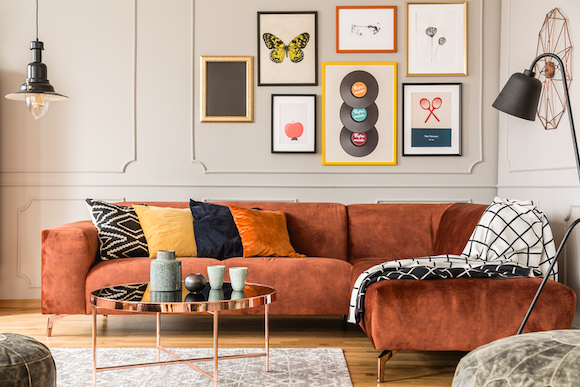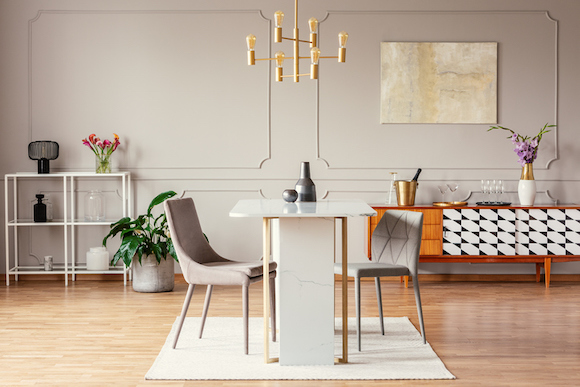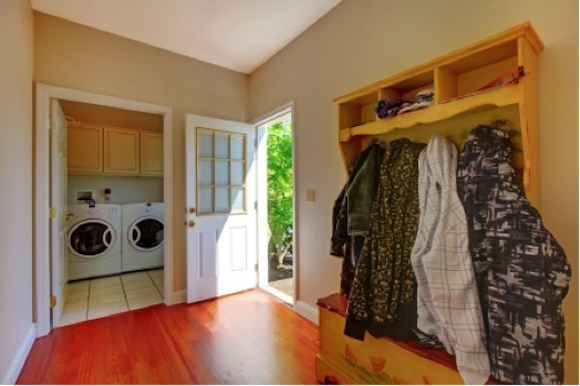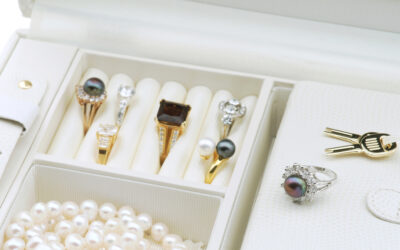When your home is besieged with piles of clutter everywhere, it can seem like an unsurmountable task to get it organized. However, the way to conquer this messy situation is to not try and take it all on at once. Don’t focus on making your entire home clutter-free. Instead, focus on making one room at a time clutter-free.
By decluttering room-by-room, you are breaking the job of decluttering your home into smaller, more manageable tasks. This will prevent you from giving up before the decluttering process has even begun. As you declutter each room of your house one by one, you’ll be motivated to continue each step of the way until your whole house is completely organized.
Begin With Conversation
If you’ve got a family, it is important to get everyone on the same page. Joshua Becker, minimalist and author of The Minimalist Home: A Room-by-Room Guide to a Decluttered, Refocused Life, recommends calling a meeting.
“Explain in positive terms what minimalism is, the removing of unnecessary possessions, so we can better live the life we want as a family,” Becker says.
Go from Easier to Harder
Begin with rooms that are easy to declutter, so you can build up your skills and confidence. Finish minimizing each space before moving on to the next. The easiest rooms to declutter are the most lived-in spaces, so by starting with those rooms, your family gets to experience the minimalist benefits right away.
Follow a System
To successfully declutter your house, you’ll need to follow a system as you go through each room. That means you’ll need a plan of action to take for each item. Here’s what we suggest:
- For each item, the first question to ask is if you will keep it or get rid of it.
- If you are going to keep it, find an organized place to keep it.
- If you are going to get rid of it make a plan to donate it, sell it, give it away, or dispose of it.
- Give yourself a time limit to get rid of unwanted items. Put unwanted items in a box or trash bag and keep them in a designated area until you are ready to drop them off or take them to a storage unit.
- Avoid shuffling items from room to room. Completely clean out one room before moving on to the next room.
The most important thing is that you develop or a follow a system that works for you.
Decluttering Checklist
Next we will take a look at some decluttering tips for each room. The following home checklist breaks down some tasks to consider for each room that you can use as embark on your very own decluttering challenge.
1. Living Room
- Clear off your coffee table with the exception of coasters and a book or two.
- Remove personal items such as toys or clothing of family members that belong in their rooms.
- Hang coats and jackets on hooks.
- Place excess blankets and pillows in a chest or storage ottoman.
- Use baskets to hold stray magazines, remote controllers, and gaming devices.
Starting with your living room is a good idea, since this one of the places your family members spend the most time in together. Cleaning it first will allow you to enjoy the fruits of your labor while you continue to declutter the rest of your house.
To begin, Becker says to have a purpose in mind for each room in your home. So the furniture and items in that room should serve to support that purpose.
Maybe your living room is a gathering place, but you’ve got more furniture than number of friends who visit. “Get rid of a sofa, and all of a sudden, your conversation grouping becomes more intimate,” he says.
2. Your Own Bedroom and Other Bedrooms
- Relocate things that don’t belong, like paperwork or your kids’ toys.
- Clear floors, shelves and surfaces.
- Clear nightstands of excess items.
- Throw out sheets and other bedding that’s in poor condition or donate those you no longer use.
- Remove unnecessary furniture and pare down decorations.
- If you are storing loose items under your bed, put them in storage containers instead.
- Use a hamper to keep dirty clothes off of the floor.
Our own private spaces are often the first to become consumed with clutter, since they are usually out of sight from visitors. But clearing out bedrooms can give you a renewed sense of control in your life and promote restful and peaceful sleep.
3. Clothes Closets
- Donate clothing that no longer fits or you just don’t wear anymore.
- Get rid of shoe boxes and use plastic drop-front shoe boxes instead.
- Install hooks and organizers to hold purses, hats, scarves, ties, or belts.
- Contain miscellaneous items inside of plastic storage containers.
- Use slim hangers to conserve space.
If your dressers are overstuffed and your closets are chaotic, it’s past time to pare down. Can you get by with fewer articles of clothing? Probably so. Morning fashion decisions will be easier, and you’ll have more disposable income if you purchase fewer clothes.
4. Bathrooms
- Toss expired medications and toiletries.
- Pare down grooming supplies.
- Clear counters, bathtub and shower spaces and give the room a good scrubbing.
- Use draw dividers to keep items organized.
- Place cleaning supplies under the sink.
A clean, uncluttered space helps you feel calmer and more relaxed.
“The makeover your bathroom needs is not more square footage and newer fixtures,” Becker sayss. “It is a removal of all the excess stuff that’s giving it that messy, distracting look.”
5. Kitchen
- Get rid of any small appliances, gadgets or cookware you never use.
- Put items you use the least in the back of your cabinets.
- Clear off countertops as much as possible.
- Relocate items not used for cooking or eating to other parts of your home.
The kitchen is a practical and social space, so declutter according to the room’s purpose for you and your family. Check out this article on a no-frills kitchen to help you decide what to keep or let go.
6. Dining Room
- Clear off table and chairs of any items that don’t belong
- Keep buffets and sideboards clear of excess items.
Unless your dining room is meant to double as a home office, clear out all of the junk mail and homework that has piled up on it. This applies to chairs as well, which are for sitting–not storing.
7. Home Office
- Go through closets, cabinets, drawers and file cabinets.
- Donate office supplies you don’t use.
- Use a filing cabinet to keep papers you aren’t using off of your desk.
- E-cycle obsolete or broken items like old monitors, keyboards, cables, or CPUs.
- Use cable ties to keep your cords and cables neatly organized.
A “wide open” desk will help promote productivity and creativity. Do your best to clear your desk surface area of bobbles.
8. Entryway
- Limit coats, jackets, and hats to one per hook.
- If you have a shoe rack with more shoes that it can fit, relocate the excess pairs to a closet
- Move piles of your mail to your home office where you can tend to it promptly.
- Put away any gear that isn’t appropriate for the season.
The entryway to your home is often the first thing visitors see, so you can reduce some of your anxiety about making a good impression by keeping this area minimal and clutter-free.
9. Storage Areas
The stuff you have in storage spaces of the home took years to accumulate, so minimizing that clutter won’t be quick. It helps to break the huge job into smaller segments like one shelf, corner or wall at a time, says Becker: “Being persistent and methodical will deliver the win.”
10. Garage
- Get rid of trash and outdated kids’ sporting gear.
- Dispose of hazardous items safely.
- Pare down tools and organize what’s left.
- Eliminate cardboard and other junk.
Save the garage for last, since you’ll encounter “diverse and difficult stuff to deal with,” according to Becker. Also, you may have to remove all that stuff you piled in the garage while you were decluttering the rest of the house.
Printable Declutter Your Home Checklist
For a printable version of this article, click here.







